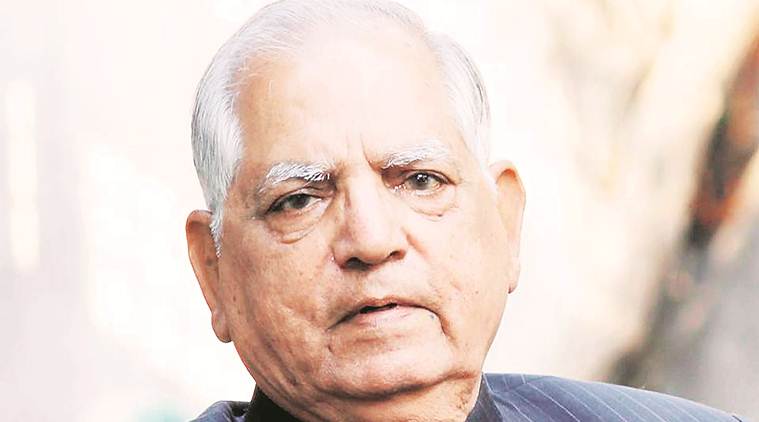
Former state minister Darbari Lal and environmentalist Parkash Singh Bhatti have a different picture of Jallianwala Bagh in their minds than how it looks today — 100 years after the tragedy. Both city dwellers, who have seen Amritsar of the pre-Partition days, feel that successive governments have failed to preserve the Bagh despite the great historical value attached to it.
Revisiting memories, former minister Darbari Lal, now in his 80s, says: “The Bagh was not like this back in 1919. It was not the way it it looks today. Everything changes with time, but Jallianwala Bagh carries great historical value and it should not have changed just for the sake of change…”
He adds, “Many people ask how the crowd couldn’t run away from the spot. Amritsar city was a very crowded place then. All streets leading to Golden Temple were very narrow. The area around the temple was congested and not as wide as it is today.”
Ex-serviceman, environmentalist and writer, Parkash Singh Bhatti (74), says: “Jallianwala Bagh was the only open space near the Golden Temple where people would sit and rest after visiting the temple. It was back in 1969, when 500th anniversary of Guru Nanak Dev ji was celebrated, that Parikarmas of Golden Temple were widened and then after 1984, a galliara was constructed around the Golden Temple. Recently, a plaza has been constructed for the visitors around the Golden Temple. But things were different in 1919.”
Bhatti adds, “The Bagh was best place to rest for crowd that came from villages for blessings at the Golden Temple on Baisakhi day. Marshal law was in place in the city, but villagers who had come for Baisakhi visited the Bagh as they used to do in past.”
Darbari Lal feels that the Bagh now is just a memorial, and has not been preserved for the sake of telling history.
He says, “There were two main entrances apart from the narrow lane that we use these days to enter the Bagh. We don’t know if other entrances were open or not. Because Jallianwala Bagh is not preserved for the purpose of telling history. It is only a memorial. Now, if someone visits Bagh he or she cannot imagine what happened that day.
“Many things were happening the before tragedy. Around 10 to 20 people were killed at what is now called Bhandari bridge on April 10, 1919. Before Jallianwala Bagh, Ram Bagh was used to torture the people for failing to properly salute to British officers. Gobindgarh Fort is also part of Jallianwala Bagh. General Reginald Dyer lived inside Gobindgarh Fort and he had ordered the English population to assemble at Gobindgarh Fort. He reached the Bagh directly from the Gobindgarh Fort with his soldiers to open the file,” he adds.
Darbari Lal also feels that the versions of eyewitnesses and survivors of the tragedy were not recorded properly.
“Respective governments did not preserve the history of Jallianwala Bagh. The Bagh itself was not preserved. Buildings and area of the Bagh were tempered with. All important spots related to the Bagh have been ignored. If you visit Amritsar as a tourist, it seems there was nothing before and Baisakhi day of 1919. There is a street where orders were issued for people to crawl across it, around a week after the massacre. If you want to tell the story of Jallianwala Bagh, then we need to tell the story of Ram Bagh, crawling Street, Bhandari pull and Gobindgarh Fort also. All these spots are connected. It would help generations to understand that every part of Amritsar was involved with Jallianwala Bagh,” he says, adding: “People do not want to know history. They only want rhetoric, and that is the reason why they struggle to understand how Jallianwala happened.”